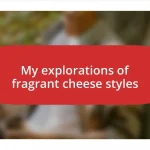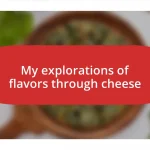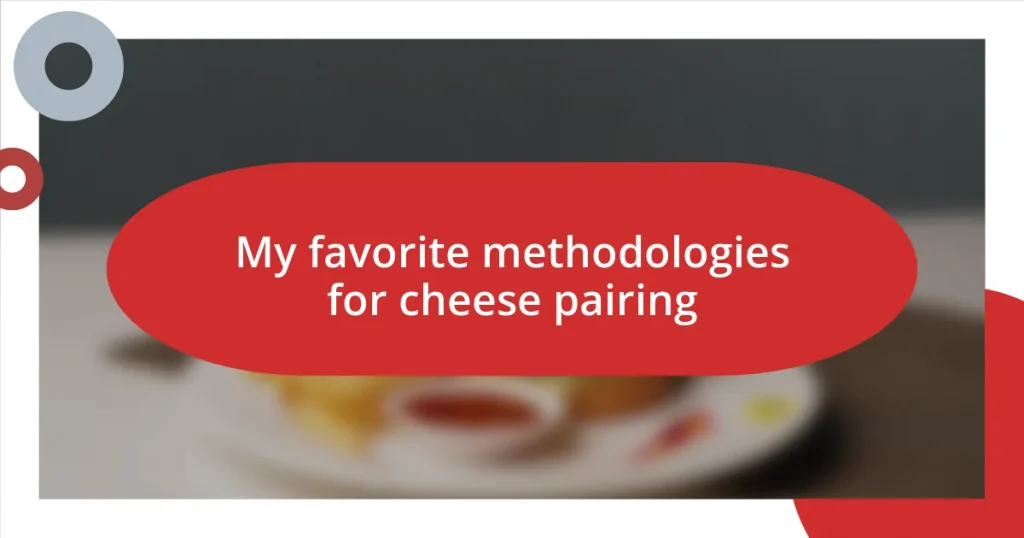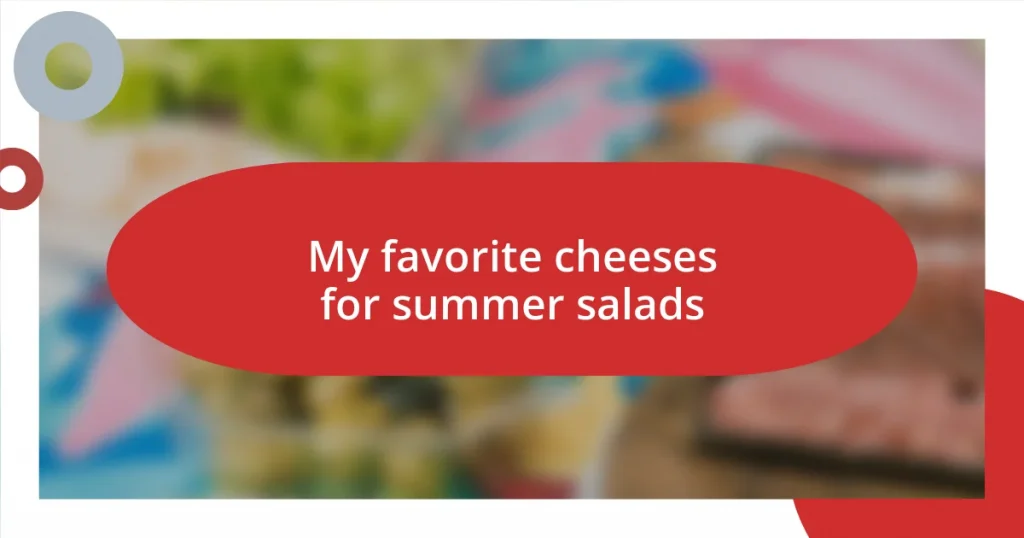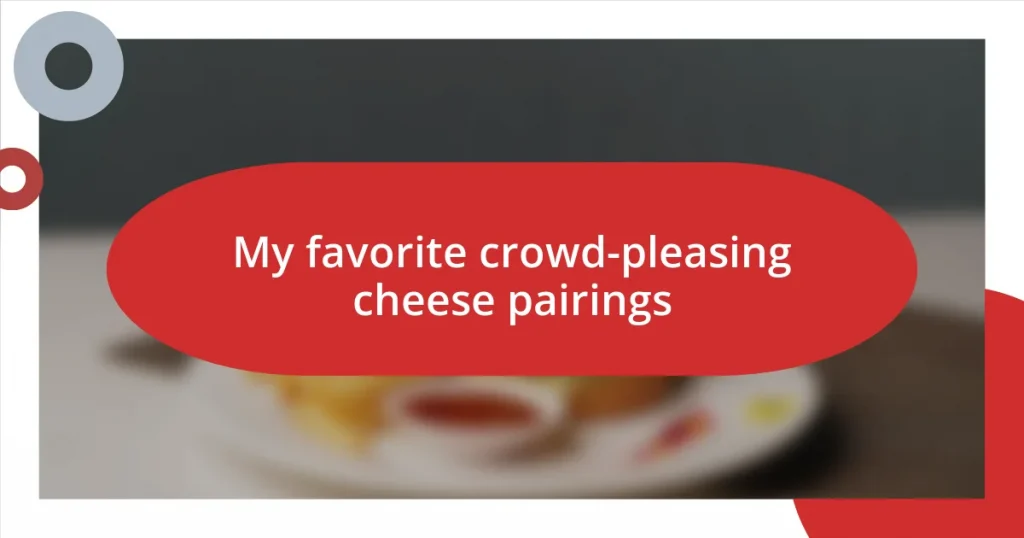Key takeaways:
- Cheese pairing enhances flavors through contrasts and complements; for example, pairing creamy cheeses with tart fruits or sweet accompaniments.
- Key factors in cheese selection include milk type, aging process, and texture, each contributing uniquely to the overall tasting experience.
- Exploratory pairings, such as unexpected combinations of flavors or textures, can lead to memorable and delightful culinary experiences.
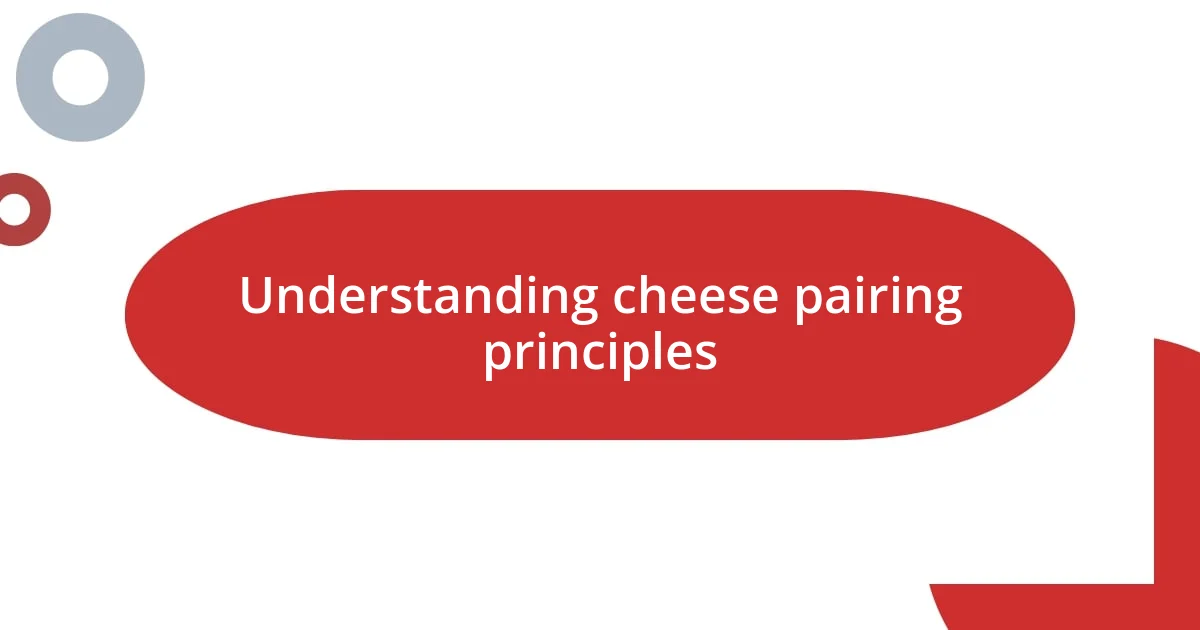
Understanding cheese pairing principles
Cheese pairing is much like a dance, where flavors complement one another to create a harmonious experience. For instance, I remember the first time I tasted a creamy Brie alongside a tart apple slice. It was as if they were made for each other, with the buttery richness of the cheese perfectly balancing the crisp acidity of the fruit. Have you ever experienced that moment when flavors just click?
When I think about cheese pairing principles, I often consider the contrasts and similarities in flavors and textures. Pairing a sharp cheddar with a smooth, sweet fig jam creates a delightful balance. The different sensations play off each other, leading to a multifaceted tasting experience. What about you? How do you explore the balance between salty and sweet?
Another layering aspect to consider is how the wine or drink you choose can elevate the cheese pairing. I once paired a nutty Gruyère with a rich, full-bodied red wine, and the experience was unforgettable. The warm notes of the wine complemented the cheese so well, it felt like a celebration in my mouth. Isn’t it fascinating how one simple pairing can change the whole perception of a cheese?
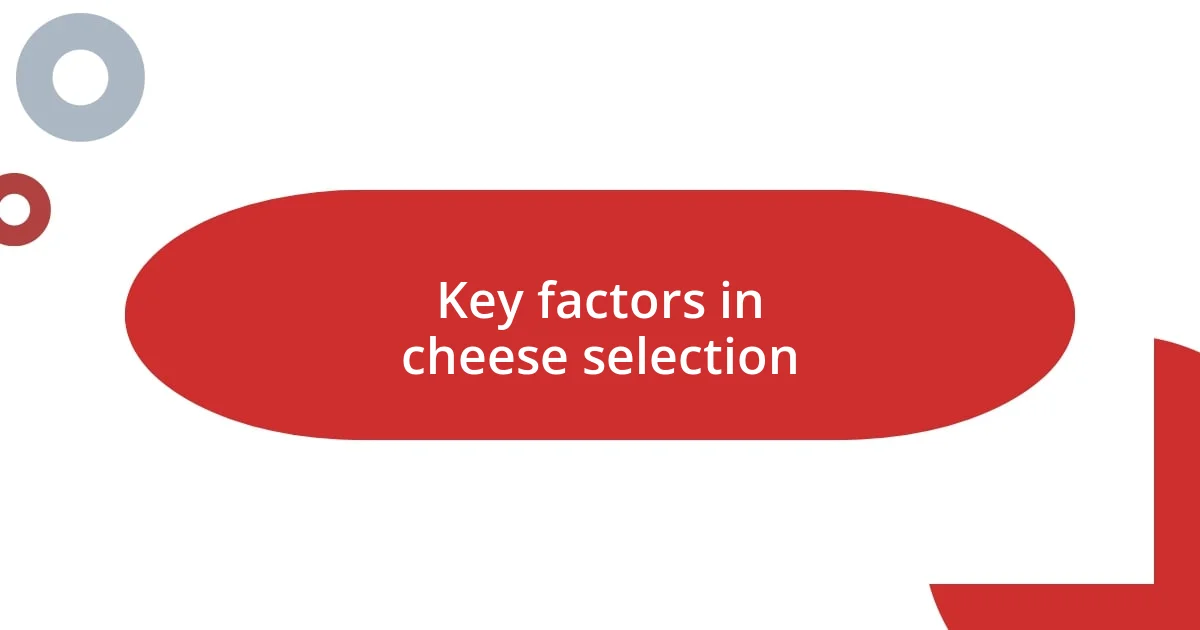
Key factors in cheese selection
When it comes to cheese selection, the first factor I consider is the milk type. Cheeses made from cow, goat, or sheep’s milk each bring distinctive flavors. I still recall a cheese tasting where I decided to explore goat cheese for the first time. The tangy notes and creamy texture were a revelation, especially when paired with a drizzle of honey. Have you experienced the magic that comes from using different milk sources?
Another crucial element is the aging process of the cheese. Young cheeses tend to be milder and creamier, while aged cheeses develop bolder, more complex flavors. I remember hosting a small gathering where I served an aged Parmigiano-Reggiano alongside a bright, zesty lemon tart. The contrast in flavor profiles was striking, and it really drove home how aging can transform a cheese’s character. What do you think; does aging cheese enhance your culinary experiences as much as it does mine?
The texture of cheese also plays a significant role in selection. Creamy, soft cheeses can create a luscious mouthfeel, while hard cheeses offer a satisfying crunch. During a picnic last summer, I paired a crumbly blue cheese with crunchy water crackers. The combination of textures added another layer to the experience that I couldn’t get enough of. How do you usually navigate the textures in your cheese selection?
| Factors | Examples |
|---|---|
| Milk Type | Cow, Goat, Sheep |
| Aging Process | Young, Aged |
| Texture | Soft, Hard |
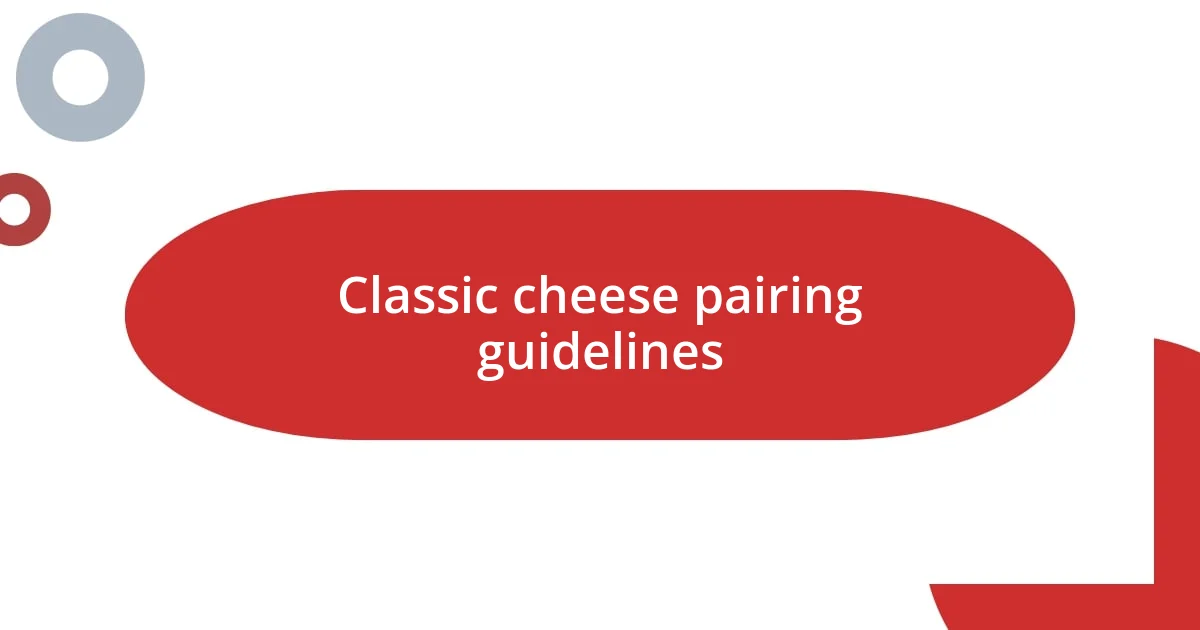
Classic cheese pairing guidelines
When it comes to classic cheese pairing, I often lean on a few tried-and-true guidelines that make all the difference in the tasting experience. For example, I remember an afternoon spent with friends, indulging in a classic pairing of aged Gouda and a robust red wine. The sweet caramel notes of the Gouda melded beautifully with the wine, creating a lasting memory. I find that the foundation of these pairings lies in certain complementary flavors that just seem to elevate each other.
Here are some classic guidelines to keep in mind when pairing cheese:
- Match intensity: Pair strong cheeses with bold wines or accompaniments for balance.
- Complement flavors: Sweet with salty; tangy with creamy; they often harmonize beautifully.
- Consider texture: A creamy cheese pairs nicely with crunchy bread or fruits for variety.
- Go regional: Local cheeses paired with regional wine tend to create a cohesive experience.
Another aspect I always consider is seasonal pairings. I still recall a cozy winter evening when I paired a sharp blue cheese with warming spiced apple cider. The contrast between the pungent cheese and the sweet, spiced drink was invigorating. It’s these seasonal nuances that can really enhance the experience and make it memorable. I encourage you to think about how your seasonal choices can transform a simple cheese platter into something extraordinary.
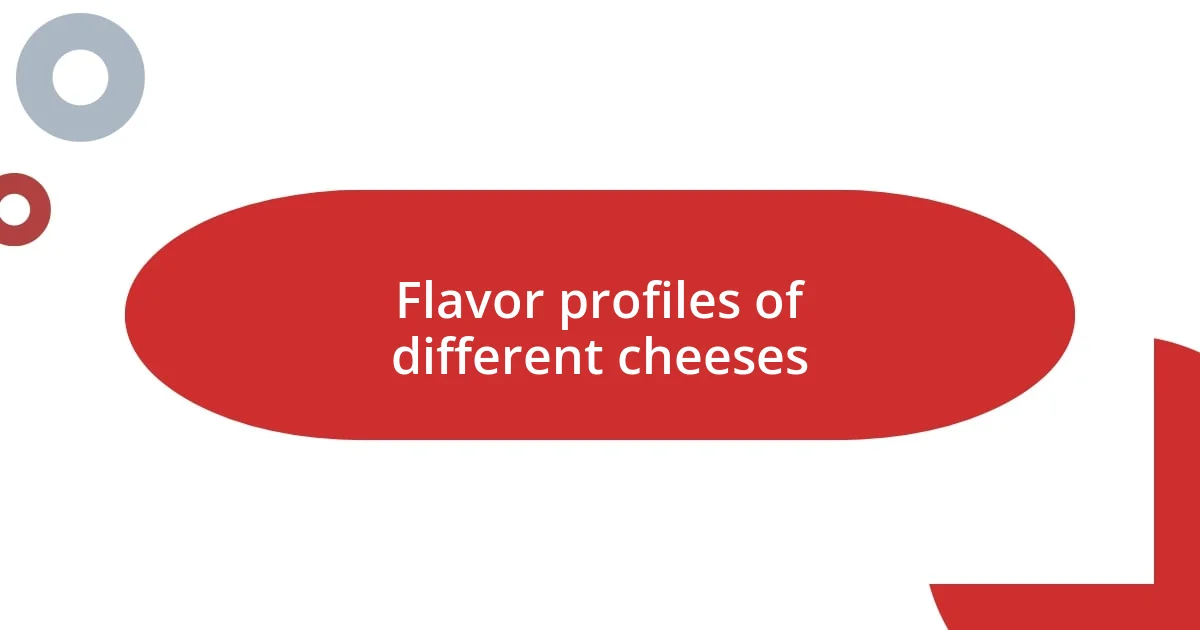
Flavor profiles of different cheeses
When exploring the flavor profiles of cheeses, I always find myself fascinated by the diversity each type offers. For instance, Brie, with its luscious creaminess and earthy undertones, brings a friendly and inviting vibe to any cheese board. I remember sharing this buttery cheese with friends during a picnic, and their delighted expressions were contagious. Isn’t it incredible how the right cheese can elevate a simple gathering into a joyful celebration?
Then there are the sharp, crumbly alternatives like aged cheddar, which possess a strong, tangy bite. I recall a time when I paired it with homemade apple chutney; the sweet and spicy flavors beautifully contrasted with the cheese’s richness. Have you ever experienced a flavor clash that turned out to be a harmonious match? It’s these unexpected combinations that can awaken our taste buds and truly surprise us.
On the other end of the spectrum, I also adore softer cheeses like goat cheese, which often carry a fresh, herbaceous profile. A memorable moment was when I drizzled my favorite herbed goat cheese with olive oil and served it with crusty bread during a friend’s gathering. The lightness of the cheese was perfectly complemented by the bread, creating a refreshing experience. How do you think the freshness of specific cheeses enhances the overall tasting journey?
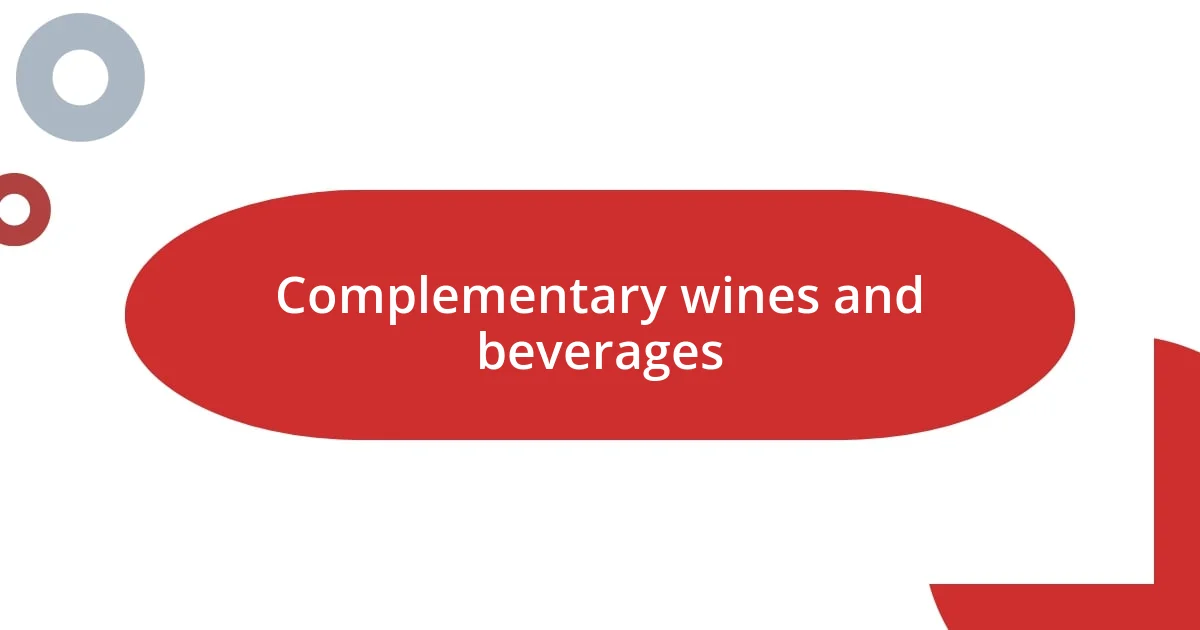
Complementary wines and beverages
I’ve found that choosing the right wine or beverage to accompany cheese can transform an ordinary cheese platter into an extraordinary feast. For example, I vividly remember pairing a creamy Camembert with a crisp Sauvignon Blanc on a sunny afternoon. The wine’s zesty acidity cut through the cheese’s lusciousness, creating a delightful balance that made us linger at the table longer than planned. That vibrant contrast between the creamy and the acidic really awakened our palates!
When I think about complementary beverages beyond wine, I often recall a surprising yet fantastic match I stumbled upon during a festive gathering—a spicy, herb-infused gin paired with aged Parmigiano-Reggiano. The gin’s botanical notes danced harmoniously with the cheese’s nutty flavor, creating a sensory experience that left everyone buzzing with excitement. Have you ever wondered how a little creativity in your pairings can lead to unexpected joyous moments? That’s the magic of exploration!
Additionally, I’ve dabbled in non-alcoholic options, and one of my favorites is pairing a rich blue cheese with a tart, tangy kombucha. The effervescence of the kombucha cut through the intense flavors of the cheese, providing a refreshing contrast. I still remember how my friends were initially skeptical but quickly converted after that first sip. It’s moments like these that remind me how versatile pairings can truly expand our tasting horizons!
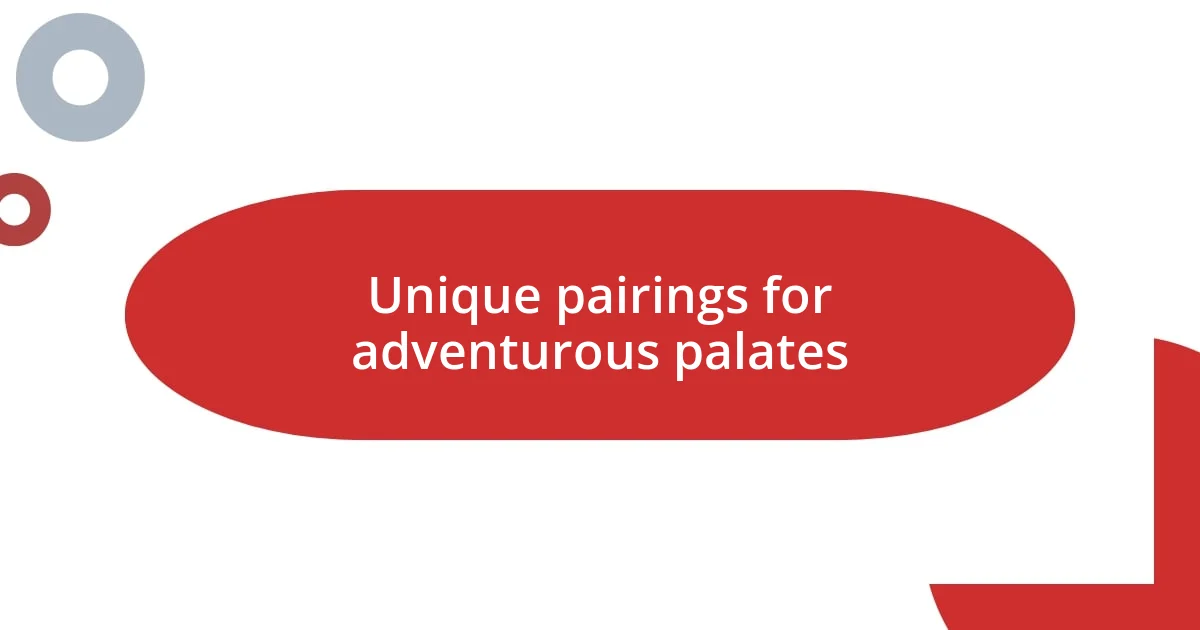
Unique pairings for adventurous palates
One of my most memorable adventures in cheese pairing involved an unexpected combination that still brings a smile to my face. I once served a sharp Roquefort with dark chocolate and a sprinkle of sea salt. As the salt enhanced the chocolate’s rich sweetness, the cheese added a blue tang that was nothing short of magical. Have you ever found joy in a pairing that completely subverted your expectations? It was a revelation that I enjoyed sharing with friends, who never thought such bold flavors could harmonize on the palate.
Traveling to a local cheese festival opened my eyes to a daring pairing I had never considered: smoked Gouda with pickled jalapeños. The blend of the cheese’s creamy, smoky notes with the spicy crunch of the pickles brought an exhilarating surprise to my taste buds. I remember the exhilaration of watching friends’ reactions as they bravely took their first bites, hesitantly at first, then with delight. Isn’t it invigorating to step outside our comfort zones with food?
On another occasion, I created a stunning platter featuring a tangy feta crumbled over roasted beet salad, drizzled with a pomegranate reduction. The bold tartness of the feta balanced the earthy sweetness of the beets, elevating the dish to a whole new level. I’ll never forget my guest’s reaction when they took that first bite—a gasp of delight filled the room! The mix of flavors and textures not only satisfied our palates but sparked a delightful conversation about food explorations. Sometimes, it’s these creative pairings that not only tantalize our taste buds but also weave stories that we remember fondly.







